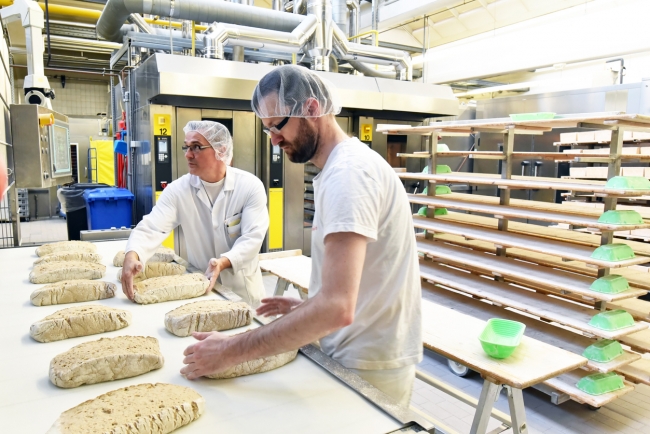5 minute read • published in partnership with Irwin Mitchell
Insight: Five ways manufacturers can attract and retain staff
The CBI has predicted that UK businesses face up to two years of labour shortages. The combination of worldwide supply chain problems, additional ‘red tape’ caused by Brexit and the loss of many EU workers make this a particularly challenging time for manufacturers. And, despite the lifting of most restrictions, we are still in the midst of the COVID-19 pandemic: a large number of people becoming infected each day is resulting in people having to self-isolate. Irwin Mitchell shares five top tips to help manufacturers retain existing staff and attract new employees
The pandemic also seems to have changed the way many workers think about where and how they work. We’ve seen a wave of resignations that have acerbated skills shortages as people move to roles that offer them better terms and conditions. Manufacturers don’t have enough lorry drivers, distribution staff and skilled operatives.
Part of the problem appears to relate to the fact that manufacturing has an image problem and there aren’t enough school leavers and graduates coming into the sector. It’s not seen as a good prospect even though salaries are often competitive and employees can expect good career paths. Young people are often turned off the sector by outdated perceptions of dirty, noisy manual labour, when in fact, many workplaces use innovative technology and have good working environments.

Britains manufacturers offer salaries that are often competitive and employees can expect good career paths and opportunities / Picture: Getty/iStock
Manufacturers are facing a ‘double whammy’ – they’re losing valuable existing staff and failing to attract new ones. What can be done?
1 – Find out why people are leaving
If you’re seeing an exodus of people from your workplace, do you know why they are moving? Is it about pay? Or are they unhappy with other elements of the working environment? You won’t know the answers to these questions unless you ask. Exit interviews are helpful, but not everyone is willing to be honest about their reasons for leaving during a face to face interview and it can be helpful to ask them to complete a short survey as well (or instead of) having a meeting.
Once you have this information, you can ascertain whether there are any trends emerging and decide whether you can do anything to reduce the number of people leaving.
2 – Conduct employee surveys
Conducting regular surveys is a good way to test the pulse of your organisation and may help you to identify and resolve issues at an early stage. Staff will usually only answer surveys honestly if a) their responses are confidential b) you don’t ask too many questions and concentrate on the important stuff and c) they have faith that the business will actually listen to what they say.
You must be willing to share the results and explain what steps your organisation will take to make changes and how long you expect this to take. This requires open communication.
3 – Invest in training
Make sure that your staff know how you can help them improve their skills and progress within your organisation. The upskilling of staff through training and development courses will help them to keep up to date with new and emerging technologies and the skills required in their role.
Investing in comprehensive training programmes is also a great way to educate new employees who might lack experience in manufacturing. If you pay the Apprenticeship Levy, make sure that you are using your fund and staff know that it’s available to experienced and older members of staff and isn’t limited to school leavers or new graduates.
It might be helpful to also set up a mentorship scheme that matches experienced workers with new recruits. This can help bridge knowledge gaps and help more inexperienced staff feel supported.

The upskilling of staff through training and development courses will help them to keep up to date with new and emerging technologies and the skills required in their role / Picture: Getty/iStock
4 – Up-skill line managers
Line managers have an important role in setting the tone of the organisation. Some are naturally good at handling people and having difficult conversations, but many aren’t. If you help them to improve they will be better placed to deal with issues promptly and prevent many from escalating.
5 – Improve your recruitment process
Businesses are competing against each other to fill vacancies and you need to think carefully about what your organisation can offer that others don’t. Attracting staff isn’t just about the amount you pay them. What other benefits do you offer? Do staff get subsidised meals in your canteen? Do they receive discounts on your products? Do you provide additional paid days off (such as wellbeing days)? Is the training you provide head and shoulders above that provided by most of your competitors?
Make sure that your recruitment process is efficient and friendly. If it isn’t candidates may be put off working for you and may turn down your offer if they already have another one on the table. Good candidates are always in high demand and will often have more than one job offer to consider.
Your offer letter should be modernised and written in plain English. Aim to combine the basic facts of the job with a welcoming tone. Let the candidates know when you expect to make a decision and get the offer letter out quickly and delivered by email. Invite the candidate to come back to you if they have any questions about the offer or anything else about the role and make sure that you are available to discuss any issues they do raise promptly (and preferably by telephone).
One other point is to recognise that we all have biases and personal experiences that lead us to think in ways that are automatic. We tend to gravitate towards people who are like us (affinity bias) and look for evidence that tends to confirm what we already think (confirmation bias). That’s a problem when it comes to recruitment. Interviewers need to base their decisions on evidence rather than generalising and learn to recognise their own unconscious biases.
You can find out more on this in the Irwin Mitchell UK Powerhouse Report here
